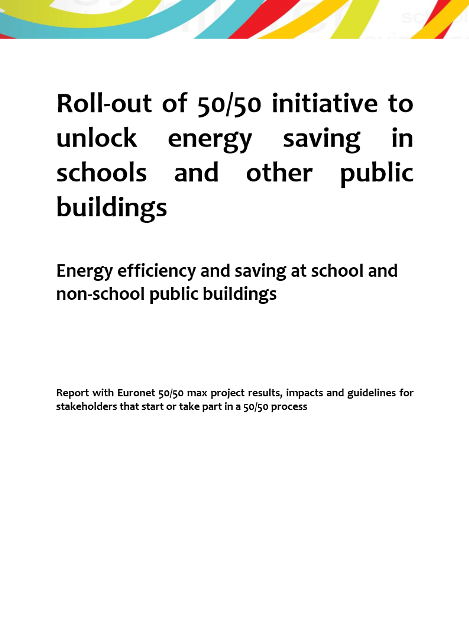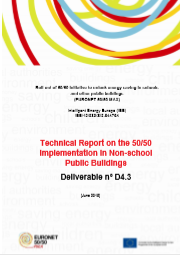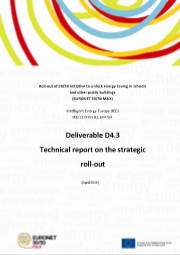 Report on EURONET 50/50 MAX results and impacts, including guidelines for stakeholders starting the 50/50 process
Report on EURONET 50/50 MAX results and impacts, including guidelines for stakeholders starting the 50/50 process
The document summarises most interesting experiences of the 3-year EURONET 50/50 MAX project, as well as impressive results achieved by over 500 schools and nearly 50 other public buildings involved in its implementation. Their performance is a living proof that even without large investments you can achieve significant energy and financial savings. And that this process may be a real fun! The publication also includes many useful guidelines and tips for municipalities and buildings wishing to take up the challenge and implement the 50/50 process on their own backyards. The report may be downloaded here. Enjoy your reading and good luck with your own energy saving efforts!
 1st and 2nd report on 50/50 implementation in public buildings
1st and 2nd report on 50/50 implementation in public buildings
EURONET 50/50 MAX expanded implementation of the 50/50 concept from schools to other types of public buildings, including sport facilities, administration and office buildings, museums, libraries, other educational buildings (e.g. kindergartens) and socio-cultural centers. They all tried to find their own ways to manage energy more efficiently and to encourage employees, visitors and other building users to change their energy consumption habits. From the 2 reports, developed after the 1st and after the 2nd year of 50/50 implementation, you can learn more how they were doing. 1st summary report may be downloaded here and the 2nd one here.
 1st and 2nd report on project evaluation by participating schools and other public buildings
1st and 2nd report on project evaluation by participating schools and other public buildings
We were very interested what the people involved in the EURONET 50/50 MAX project think about it and about the overall 50/50 concept. Are they happy to be a part of our energy-saving community? Do they think that the 50/50 methodology is useful for increasing energy awareness of building users? Do they think that it is easy to execute? To learn answers to these and other questions, we have developed an on-line survey and disseminated it among project participants. Answers provided helped us to better understand strong and weak aspects of the project, as well as to improve support provided by the consortium to front-runner schools and other public buildings. But the overall feedback was very positive. See for yourself! 1st evaluation report may be downloaded here and the 2nd one here.
 Report on strategic roll-out of the 50/50 concept
Report on strategic roll-out of the 50/50 concept
Implementation of the 50/50 methodology has proven to bring significant benefits, both in terms of achieving measurable energy & financial savings and in terms of changing energy consumption habits of building users. Therefore, we tried to promote it as widely as possible encouraging new municipalities, schools and other public buildings to follow and take advantage of our experience. And we were quite successful! As a result of our work the 50/50 concept was involved in nearly 200 strategies and actions plans implemented on different levels and 29 project observers were regularly informed about our activities and progress. More information may be found in the report on the strategic roll-out of the 50/50 concept, which may be downloaded here.
















 The sole responsibility for the content of this website lies with the authors. It does not necessarily reflect the opinion of the European Union. Neither the EACI nor the European Commission are responsible for any use that may be made of the information contained therein.
The sole responsibility for the content of this website lies with the authors. It does not necessarily reflect the opinion of the European Union. Neither the EACI nor the European Commission are responsible for any use that may be made of the information contained therein.